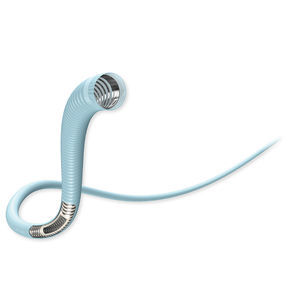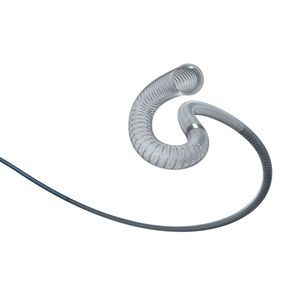
- Secondary care
- Cardiology
- Catheter guidewire
- Lepu Medical
Catheter guidewire Flager®neurovascular
Add to favorites
Compare this product
Characteristics
- Applications
- catheter
- Area of the body
- neurovascular
Description
Catheters and Other Interventional Devices are Selectively Guided and Placed in the Neurovascular System.
Guide wire tip design
With classical core-to-tip design, while the tip-end flexibility is ensured, tactile feedback can be realized so that
the guide wire features outstanding maneuverability.
Multi-section mandrel design
Ensuring the flexibility and traceability of the distal end, and considering good torsion control and support, the
the guide wire can safely and smoothly pass through lesions or tortuous blood vessels.
Two different sheath structures
1. The design of the distal coil sheath and polymer sheath makes the guide wire have good tactile feedback,
which can meet clinical needs.
2. All-polymer sheath design at the distal end makes the headend smoother and easier to pass through tortuous
and high-resistance lesions.
Separable point design
320 cm guide wire is composed of a 200 cm guide wire
and an extended guide wire.
Non-invasive headend
Damage to the vascular structure can be avoided when
the guide wire contacts the vascular wall.
Visibility during operation
The 3cm visible coil can enhance the visibility of the
guide wire headend.
Dierential coating designs
The distal hydrophilicity can reduce the resistance against the guide wire
in the vessel, while the proximal hydrophobicity can lower the friction
between the devices.
Torque Response
Good torque control, torque control ratio (1:1),
accurate torque control feedback, and synchronous
operation.
Catalogs
Exhibitions
Meet this supplier at the following exhibition(s):

Related Searches
- Lepu Medical catheter
- Lepu Medical balloon catheter
- Stent
- Lepu Medical electrocardiograph
- Lepu Medical digital electrocardiograph
- Lepu Medical dilatation catheter
- Lepu Medical cardiac catheter
- Peripheral catheter
- Electrocardiograph with screen
- 12-channel electrocardiograph
- ECG with printer
- Metal stent
- Lepu Medical coronary catheter
- Catheter guidewire
- Diagnostic catheter
- Venous catheter
- Access catheter
- Double-lumen catheter
- Hydrophilic catheter
- Wired electrocardiograph
*Prices are pre-tax. They exclude delivery charges and customs duties and do not include additional charges for installation or activation options. Prices are indicative only and may vary by country, with changes to the cost of raw materials and exchange rates.









